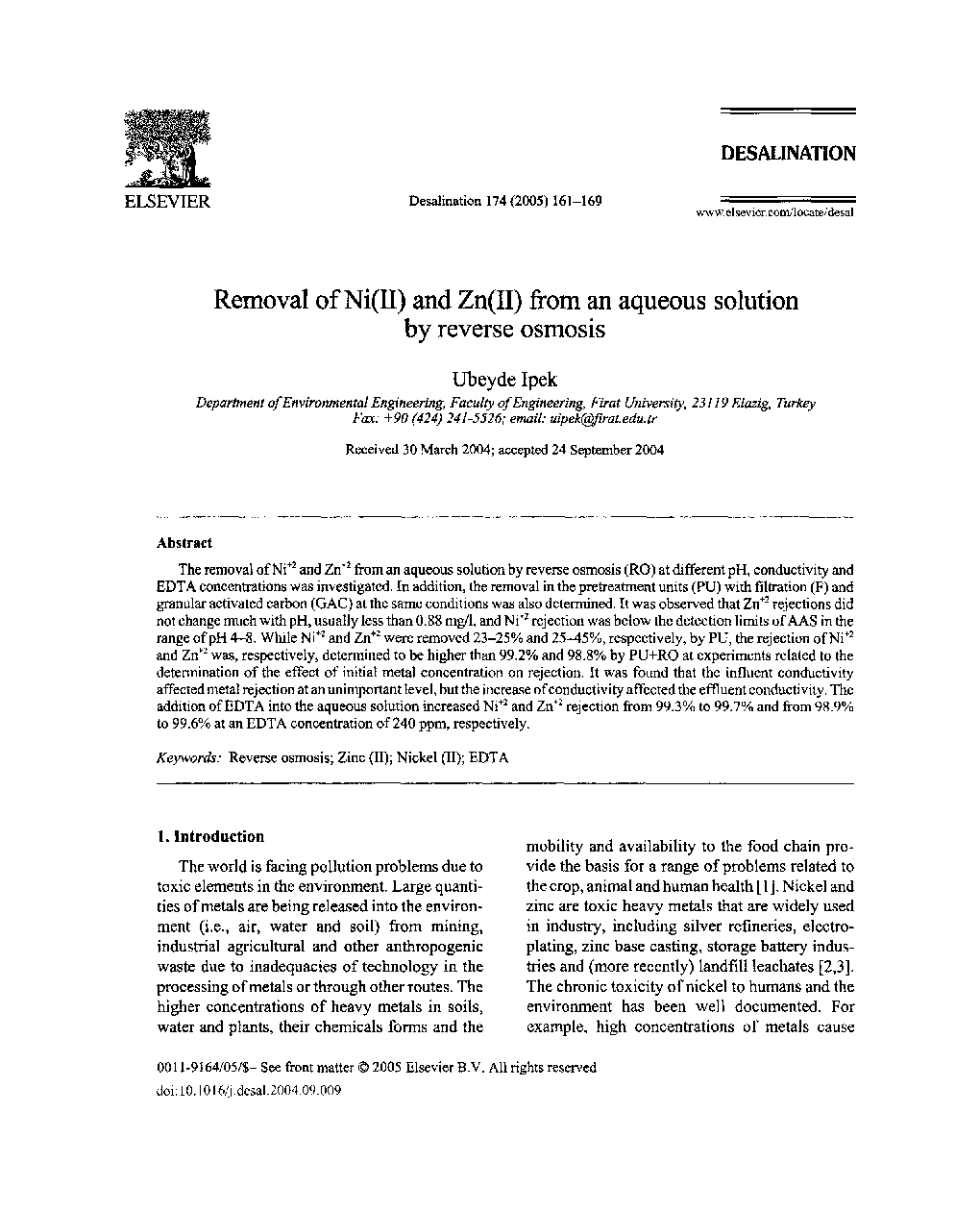| Article ID | Journal | Published Year | Pages | File Type |
|---|---|---|---|---|
| 10386181 | Desalination | 2005 | 9 Pages |
Abstract
The removal of Ni+2 and Zn+2 from an aqueous solution by reverse osmosis (RO) at different pH, conductivity and EDTA concentrations was investigated. In addition, the removal in the pretreatment units (PU) with filtration (F) and granular activated carbon (GAC) at the same conditions was also determined. It was observed that Zn+2 rejections did not change much with pH, usually less than 0.88 mg/l, and Ni+2 rejection was below the detection limits of AAS in the range of pH 4-8. While Ni+2 and Zn+2 were removed 23-25% and 25-45%, respectively, by PU, the rejection of Ni+2 and Zn+2 was, respectively, determined to be higher than 99.2% and 98.8% by PU+RO at experiments related to the determination of the effect of initial metal concentration on rejection. It was found that the influent conductivity affected metal rejection at an unimportant level, but the increase of conductivity affected the effluent conductivity. The addition of EDTA into the aqueous solution increased Ni+2 and Zn+2 rejection from 99.3% to 99.7% and from 98.9% to 99.6% at an EDTA concentration of 240 ppm, respectively.
Related Topics
Physical Sciences and Engineering
Chemical Engineering
Filtration and Separation
Authors
Ubeyde Ipek,
